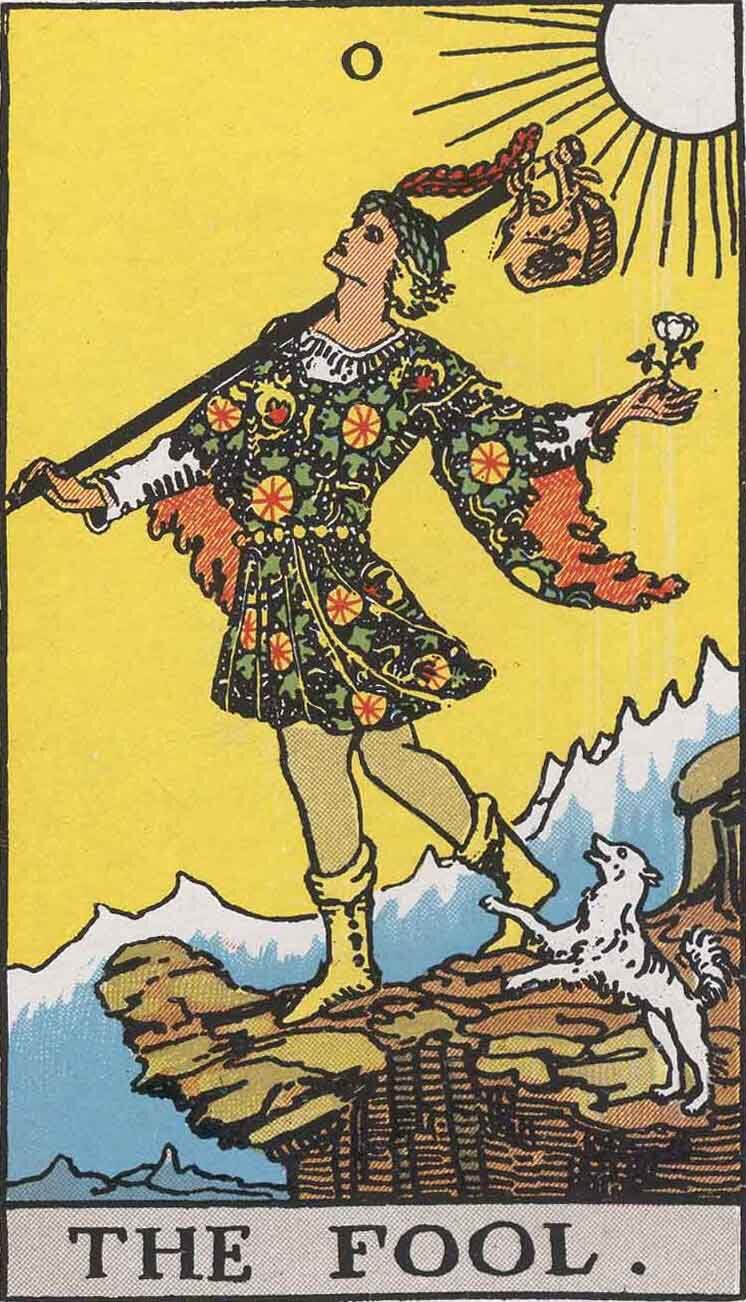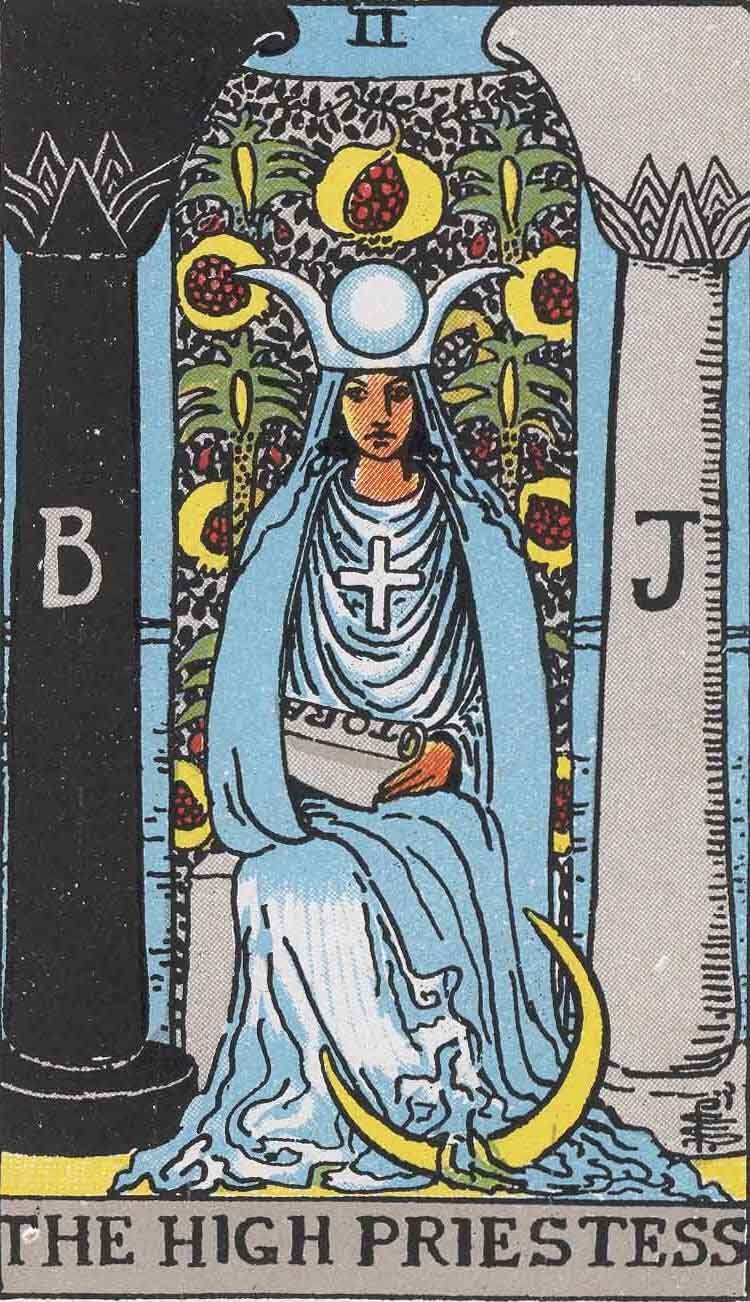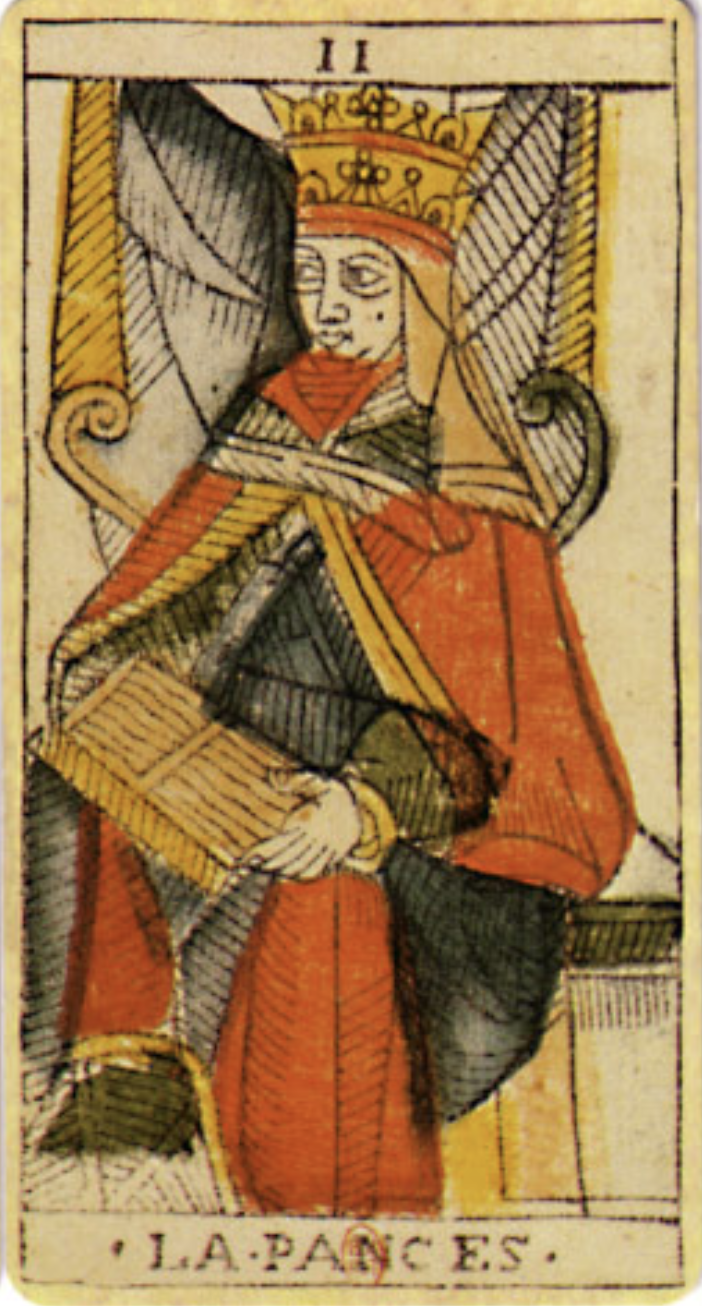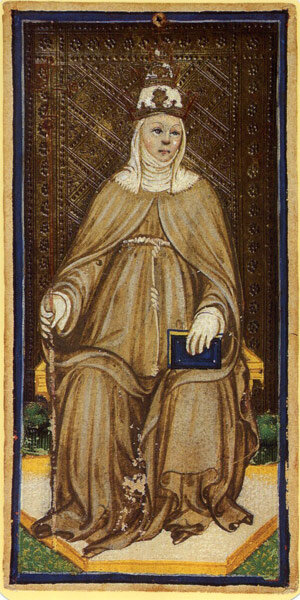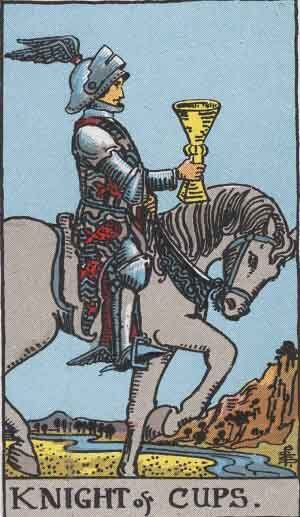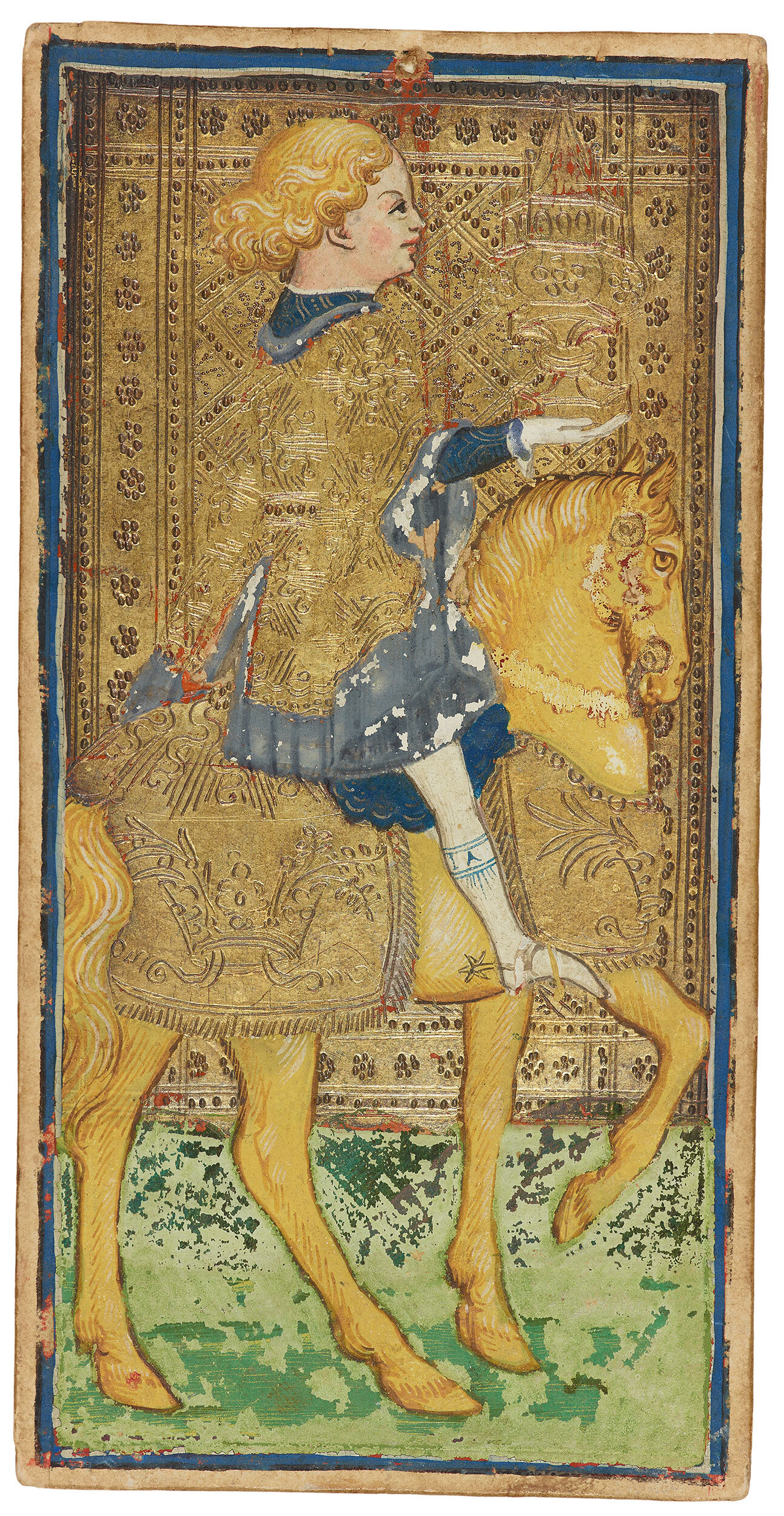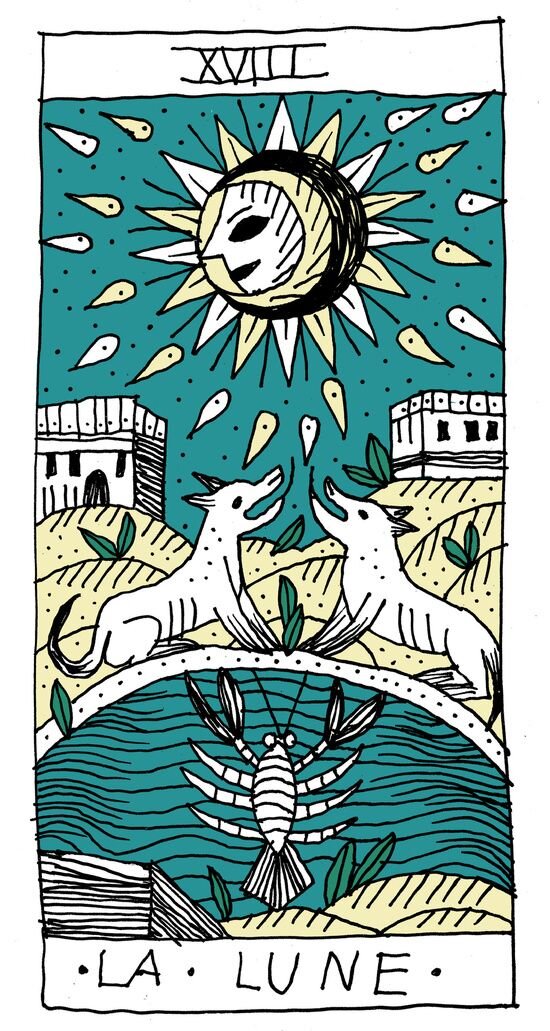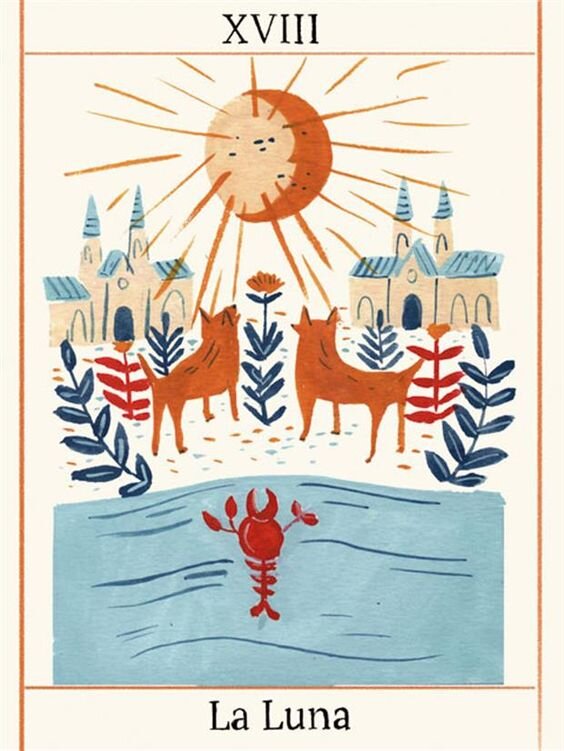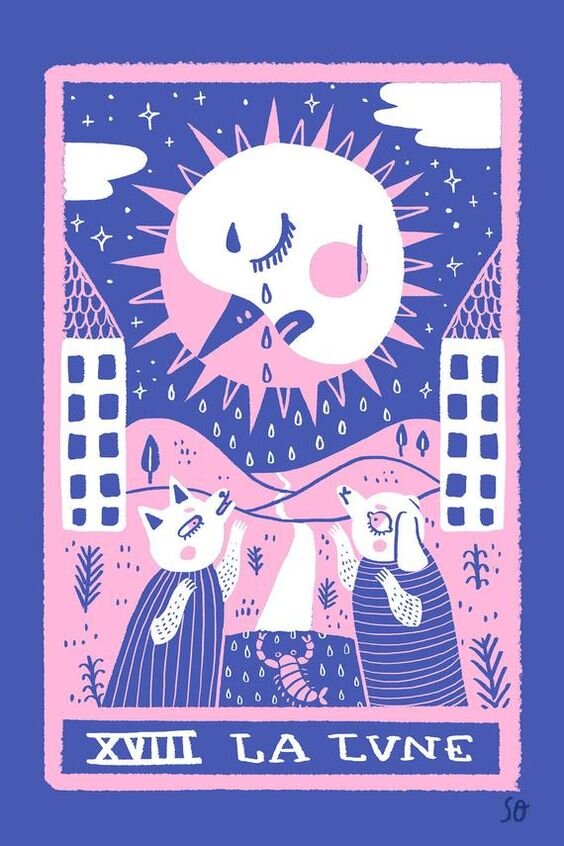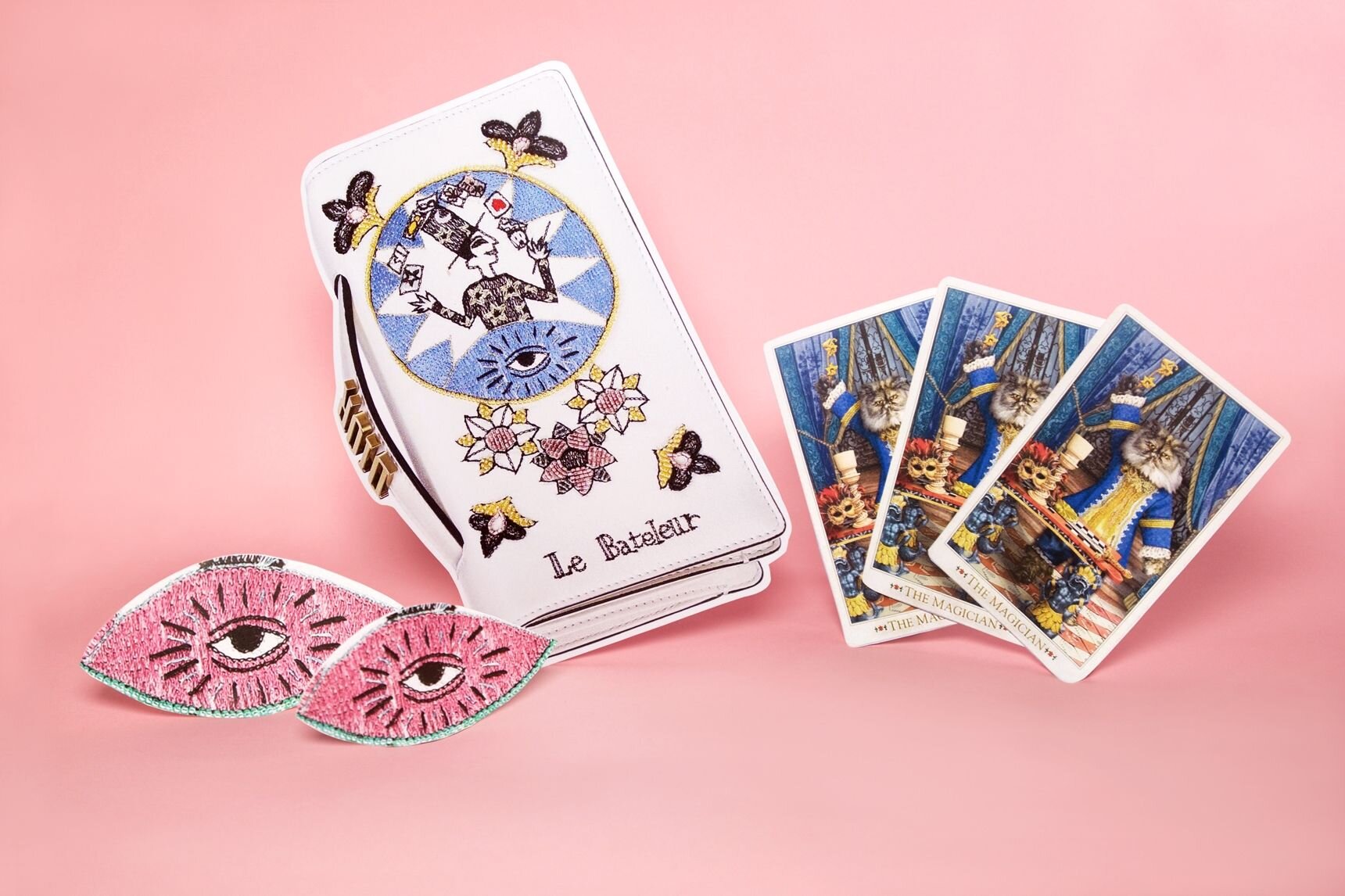A Visual History of Tarot Cards
The first time I met a tarot reader was in Providence, Rhode Island. In an incense shop frequented by Brown University students, we had our palms read for 20 dollars by a mysterious woman who spoke to her family in a mixture of Italian, Serbian, and Bulgarian (at least that’s what she claimed). She stumbled upon some really convincing, secretive facts about my friend that left her in absolute shock, so we had our hopes up a little — maybe she was actually a psychic? However, when it was my turn, she persisted that I had an evil twin whom I have mixed feelings toward, so she lost me right from the beginning. Nevertheless, the mysterious woman captured my friend’s curiosity and convinced her get a tarot reading for 40 dollars.
The Past, the Present, and the Future.
Drawing three cards and interpreting them as insight into the past, present, and advice or admonition for the future — this is one of the most popular methods in tarot reading.
Now, I have friends who give occasional readings for both fun and guidance. One time I got the Tower, arguably the worst card in the Major Arcana, then I was coughing and sneezing for the majority of winter quarter. Another friend also encountered misfortune after getting a “bad” card. On the other hand, there are little pieces of advice that become surprisingly fitting or “too precise to be an accident.”
Ultimately, I don’t believe in tarot cards in the context of the occult, but I think they can offer sound advice through an entertaining and interactive process. I believe in tarot cards because I believe in the person giving the reading.
Enough about me. Let’s dive into the visual history of tarot cards.
History
Tarot cards likely originated in northern Italy during the late 14th or early 15th century. The oldest surviving set, known as the Visconti-Sforza deck, was thought to be inspired by the costumed figures who participated in carnival parades. Interestingly, the same carnival is mentioned in Edgar Allen Poe’s infamous short story, “The Cask of Amontillado."
These illustrated playing cards with imaginative themes were used for a leisurely card game called tarocchi, which became popular in Europe. Tarocchi became tarot in southern France, which is how it got its name. Although the cards have always carried fanciful, richly connotative imageries — Death, the Hanged Man, the Tower, just to name a few — they did not carry occult meanings until the 18th century.
In a series of French volumes called “The Primeval World, Analyzed and Compared to the Modern World,” published from 1773 onward, Antoine Court de Gébelin proposed the theory that tarot cards came from Egypt and contained the secret wisdom of Thoth, the god of writing, magic, wisdom, and the moon. Around the same time, Jean-Baptiste Alliette, writing under the pseudonym Etteilla, popularized tarot divination and made a living. Eliphas Lévi, author and former Catholic priest, popularized the notion that tarot symbols were somehow connected with the Hebrew alphabet, and thus to the Jewish mystical tradition of kabbalah.
Much of the tarot imageries we see today come from the ignorance of French occultist linking Egypt and the Hebrew language to spiritualism.
In 1909, Arthur Edward Waite, British poet and writer of occult and esoteric matters, hired Pamela Colman Smith to illustrate the widely popular Waite-Smith deck. It is also known as the Rider-Waite deck because it was published by the Rider Company, which is used by many tarot card practitioners until this day. Even for amateurs, it is undoubtedly a classic deck to own.
Aesthetic
In the Rider-Waite deck, catering to a modern taste and giving importance to esoteric practices, the Christian imagery of previous decks was toned down. For instance, the Pope became the Hierophant, and the Papess became the High Priestess. The Minor Arcana was illustrated with allegorical scenes, where earlier decks only had simple designs.
However, general compositions for the Major Arcana remained unchanged. In the case of both the Empress and the Knight of Cups, the imageries are distinct in terms of color scheme and decorative details. It is intriguing to compare these renditions because they have such different artistic styles.
Similarly, the Moon has kept its compositional elements for more than five centuries: a path leading off into the distance, animals on both sides representing two sides of human nature, a crawfish crawling out of the water, and distant towers.
Culture
The continuous reproduction and recreations of the Rider-Waite deck is extremely fascinating to me. While most artists follow the composition and major elements, they infuse unique styles into the depiction of these elements, therefore delivering completely different visual experiences for the viewer.
Recreation also occurs in the realm of fashion. Both Christian Dior and Maria Grazia Chiuri, creative director since 2016, are interested in the visual and spiritual qualities of tarot cards. Numerous collections in the past decade have been inspired by tarot cards.
JOJO’s Bizarre Adventure, created by manga artist Hirohiko Araki, bases the main characters of his third series in a mixture of the Major Arcana and Egyptian deities.
Created as playing cards and later imbued with a layer of the occult, tarot cards have become an artistic medium that expands out of its original significance. The prevalence of “pop culture tarot cards” is a proof of its power to infinitely carry ideas and meanings — what is a Jane Austen tarot deck supposed to represent? What about Luke Skywalker as the Fool? Tony Stark as the Chariot?
Modern Witch Tarot deck by Lisa Sterle.
Much like the format of a poster, a canvas, or a triptych, tarot cards have become an evolving art form. Personally, I am excited to see what people do with tarot cards in this new decade.
cover image via





